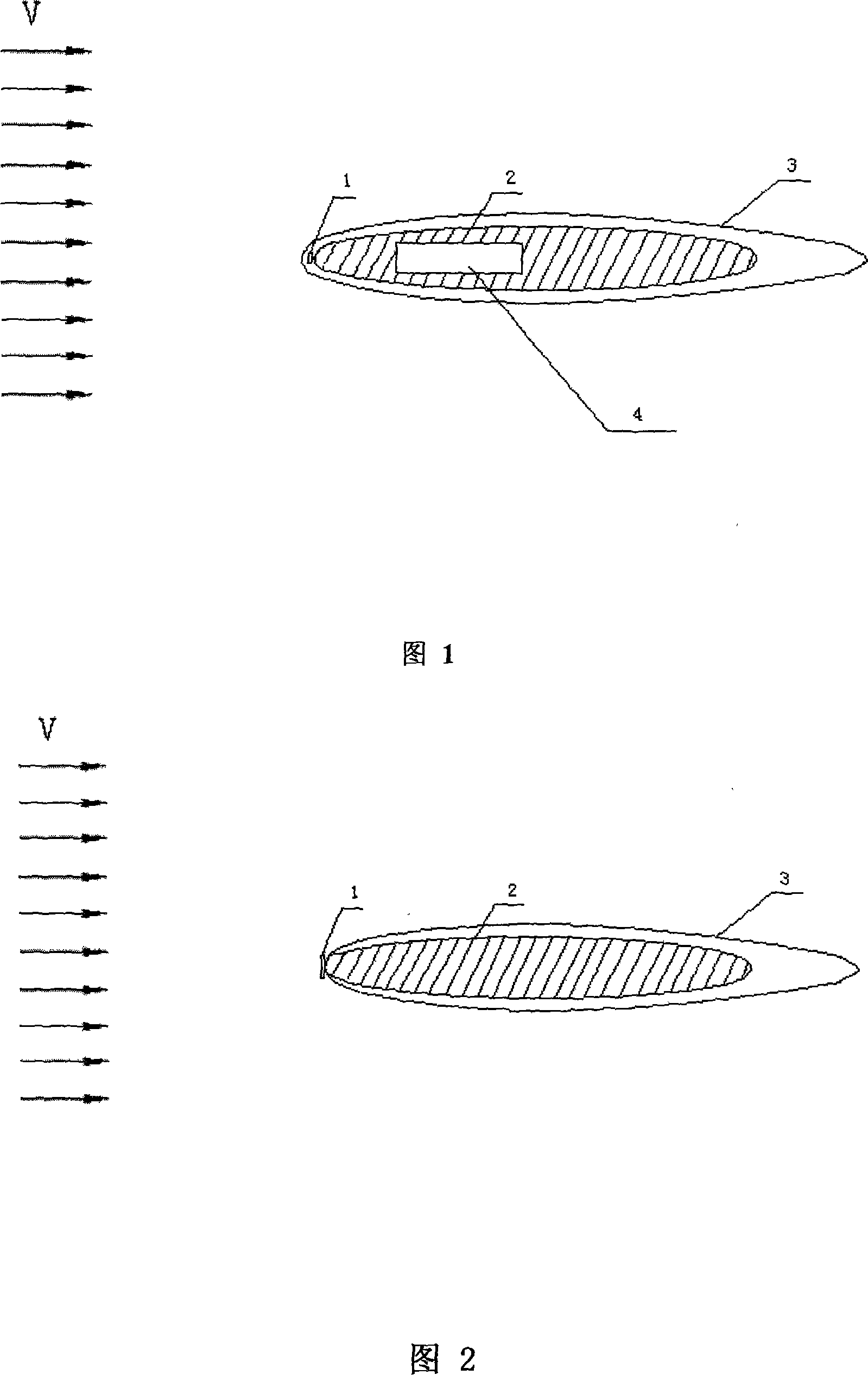Under water flying-body electromag netic heating cavitation apparatus
An underwater vehicle and cavitation technology, applied in the direction of hull, hull design, transportation and packaging, can solve the problem that the speed of the vehicle is difficult to further increase significantly, and achieve the effect of increasing the speed of the vehicle and reducing frictional resistance.
- Summary
- Abstract
- Description
- Claims
- Application Information
AI Technical Summary
Problems solved by technology
Method used
Image
Examples
Embodiment Construction
[0012] A preferred embodiment of the present invention is described as follows in conjunction with accompanying drawing:
[0013] Referring to Fig. 1, the electromagnetic heating cavitation device of the underwater vehicle is to install a cavitator 1 composed of magnetic molecular materials on the head of the vehicle 2, and a high-frequency alternating electromagnetic field generator is also installed in the vehicle 2 device 4. The cavitator 1 composed of magnetic metal material cuts the alternating magnetic field lines, and the magnetic metal molecules generate alternating currents, that is, eddy currents. The eddy currents make the molecules move at high speed and irregularly, and the molecules collide and rub against each other to generate heat energy, and the temperature rises rapidly. When the power is sufficient, the temperature of the cavitator 1 can be maintained between 100 and 1000 degrees, and the water will be vaporized when it comes into contact with the high-temp...
PUM
 Login to View More
Login to View More Abstract
Description
Claims
Application Information
 Login to View More
Login to View More - R&D
- Intellectual Property
- Life Sciences
- Materials
- Tech Scout
- Unparalleled Data Quality
- Higher Quality Content
- 60% Fewer Hallucinations
Browse by: Latest US Patents, China's latest patents, Technical Efficacy Thesaurus, Application Domain, Technology Topic, Popular Technical Reports.
© 2025 PatSnap. All rights reserved.Legal|Privacy policy|Modern Slavery Act Transparency Statement|Sitemap|About US| Contact US: help@patsnap.com

